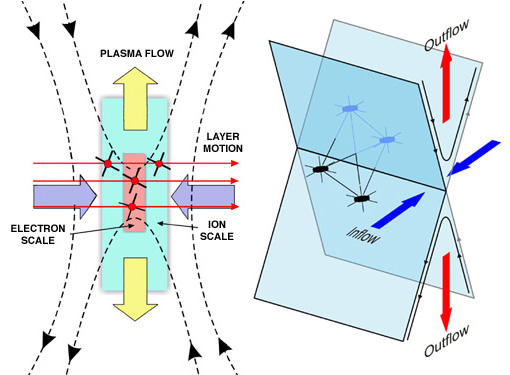MMS: Mission Implementation (III)
Spacecraft Formation
The sketches used in scientific papers and textbooks to illustrate the concept of reconnection are generally two-dimensional. Yet reconnection, like other natural phenomena, occurs in three dimensions, not two, and unraveling its physics requires simultaneous observations of the magnetic field and plasma at, ideally, a minimum of four locations. Thus, MMS is being implemented with four spacecraft, which will be launched together on a single launch vehicle and inserted sequentially into Earth orbit. As they explore the dayside and nightside reconnection regions, the spacecraft will fly in a tetrahedron formation, allowing them to capture the three-dimensional structure of the reconnection sites they encounter. Onboard propulsion will be used to adjust the separation among the spacecraft, from hundreds of kilometers to as close as 10 kilometers, to achieve the optimum interspacecraft separation for probing the diffusion region.

Left: MMS will use larger separations (up to 400 km) to identify reconnection events, with spacecraft located in the inflow and outflow regions. Smaller separations (down to 10 km), with the spacecraft in the diffusion region, will be used to determine the processes driving reconnection. Right: 3D rendering of a reconnection site, showing the spacecraft in tetrahedral formation.
|